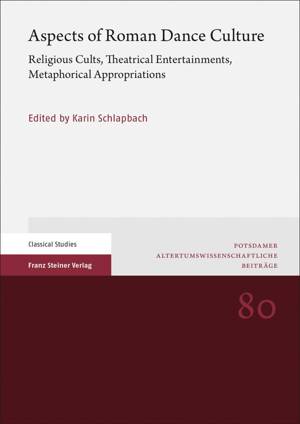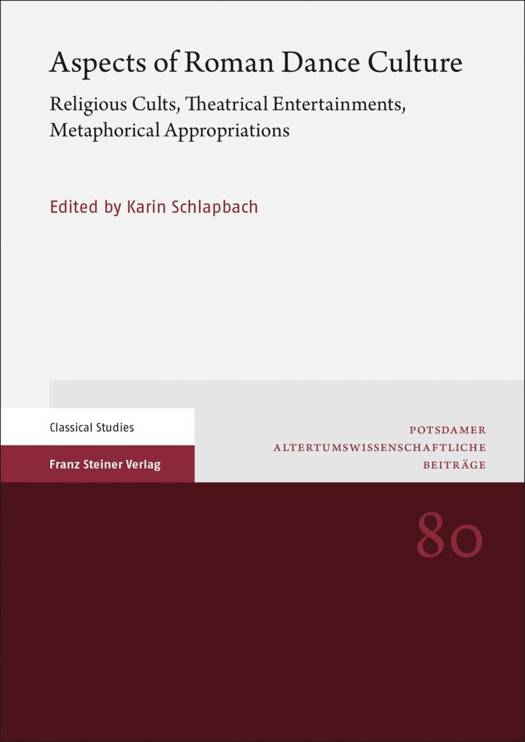
- Afhalen na 1 uur in een winkel met voorraad
- Gratis thuislevering in België vanaf € 30
- Ruim aanbod met 7 miljoen producten
- Afhalen na 1 uur in een winkel met voorraad
- Gratis thuislevering in België vanaf € 30
- Ruim aanbod met 7 miljoen producten
Zoeken
Aspects of Roman Dance Culture
Religious Cults, Theatrical Entertainments, Metaphorical Appropriations
€ 69,45
+ 138 punten
Omschrijving
The fourteen chapters of this book examine Roman dance by looking at its role in Roman religion, by following it into the theatre and the banquet hall, and by tracing its (metaphorical) presence in a variety of literary contexts, including rhetorical treatises, biography, and lyric poetry. These different approaches, which draw on literary texts, inscriptions, documentary papyri, the visual record, and modern reperformances, converge in illustrating a rich and vibrant dance culture which prided itself on indigenous dances no less than on its capacity to absorb, transform, or revive the dance traditions of their Etruscan or Greek neighbours. Dance was a cultural practice which was able to affirm Romanness, for instance in the case of the Salian priests, but also to raise the question of what was Roman in the first place, for instance when the originally Greek pantomime was embraced by Augustus and came to be known as "Italian style of dancing". Together the fourteen case studies offer fresh perspectives on an underexplored topic, shedding light on the manifold contexts, functions, practitioners, and appreciations of Roman dance.
Specificaties
Betrokkenen
- Uitgeverij:
Inhoud
- Aantal bladzijden:
- 340
- Taal:
- Duits
- Reeks:
- Reeksnummer:
- nr. 80
Eigenschappen
- Productcode (EAN):
- 9783515133234
- Verschijningsdatum:
- 19/10/2022
- Uitvoering:
- Paperback
- Formaat:
- Trade paperback (VS)
- Afmetingen:
- 170 mm x 239 mm
- Gewicht:
- 2036 g

Alleen bij Standaard Boekhandel
+ 138 punten op je klantenkaart van Standaard Boekhandel
Beoordelingen
We publiceren alleen reviews die voldoen aan de voorwaarden voor reviews. Bekijk onze voorwaarden voor reviews.










